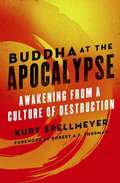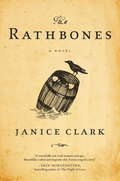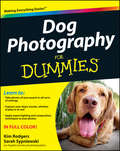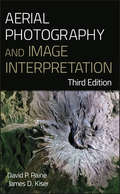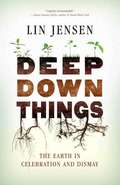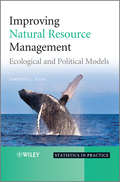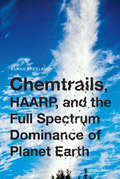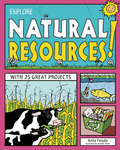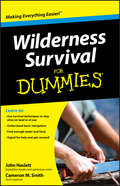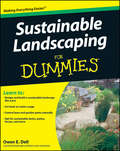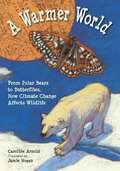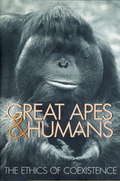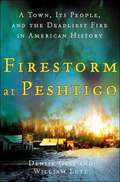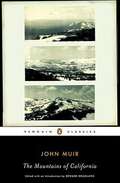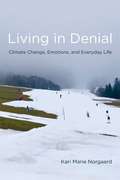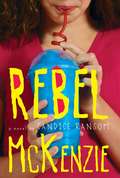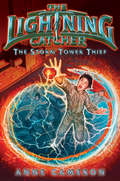- Table View
- List View
Buddha at the Apocalypse
by Kurt Spellmeyer Robert ThurmanTimely and audacious, Buddha at the Apocalypse challenges us to look directly at the devastating assumptions underlying the very mechanisms of the modern world - and offers a clarion call to awaken from a pervasive culture of destruction into a natural, sustainable, and sane peace. Kurt Spellmeyer references the Bible, popular culture, Zen, and Western philosophy in addressing two questions: how did we get here, and what can we do now. An answer to pervasive cynicism and decline, Buddha at the Apocalypse shows how to accept and connect with reality in dark times.
The Rathbones
by Janice ClarkA gothic, literary adventure set in New England, Janice Clark's haunting debut chronicles one hundred years of a once prosperous and now crumbling whaling family, told by its last surviving member.Mercy Rathbone, fifteen years old, is the diminutive scion of the Rathbone clan. Her father, the last in the beleaguered dynasty, has been lost at sea for seven years - ever since the last whale was seen off the coast of Naiwayonk, Connecticut. Mercy's memories of her father grow dimmer each day, and she spends most of her time in the attic hideaway of her reclusive uncle Mordecai, who teaches her the secrets of Greek history and nautical navigation through his collection of specimens and moldering books. But when a strange, violent visitor turns up one night, Mercy and Mordecai are forced to flee the crumbling mansion and set sail on a journey that will bring them deep into the haunted history of the Rathbone family, and the reasons for its undoing.As Mercy and Mordecai sail from island to island off the Connecticut coast, encountering dangers and mysteries, friends and foes, they untangle the knots of the Rathbone story, discovering secrets long encased in memory. They learn the history of the family's founder and patriarch, Moses Rathbone, and the legendary empire he built of ships staffed with the sons of his many, many wives. Sons who stumbled in their father's shadow, distracted by the arrival of the Stark sisters, a trio of "golden" girls, whose mesmerizing beauty may have sparked the Rathbone's decline.From the depths of the sea to the lonely heights of the widow's walk; from the wisdom of the worn Rathbone wives to the mysterious origins of a sinking island, Mercy and Mordecai's journey will bring them to places they never thought possible. But will they piece together a possible future from the mistakes of the past, or is the once great family's fate doomed to match that of the whales themselves?Inspired by The Odyssey by way of Edgar Allan Poe and Moby Dick, The Rathbones is an ambitious, mythic, and courageous tour de force that marks the debut of a dazzling new literary voice.
Dog Photography For Dummies
by Kim Rodgers Sarah SypniewskiTips and tricks for capturing your canine's personality with every click of the camera Simply snapping a picture may not capture the playfulness or spontaneity of a dog. Knowing what kind of equipment, angle, and composition to use while photographing a dog can make all the difference in the character captured in the photo. Dog Photography For Dummies gives you practical and fun guidance for capturing your dog's personality and turning ordinary shots into priceless memories that will last a lifetime. Covering all the latest and greatest gadgets and accessories available to capture and alter photos of your favorite pooch, Dog Photography For Dummies offers techniques that amateurs and intermediates alike can use to improve their photography skills. This hands-on guide features great examples of dog portraiture, plus tons of ideas for fun new places to pose your furry friend, such as the beach, the park, the car, in the snow, and more. Detailed discussions of color versus black-and-white, indoors versus outdoors, composition, and capturing movement Advice on how to get a dog to sit still Considerations for photographing a shy dog who is scared of the camera Guidance on making the most of natural light Tips for photographing dogs with black (or dark) coats How to photograph people and dogs together Whether for decorating, memories, or holiday cards, Dog Photography For Dummies makes it easy to capture the best of your four-legged friend.
Aerial Photography and Image Interpretation
by James D. Kiser David P. PaineThe new, completely updated edition of the aerial photography classicExtensively revised to address today's technological advances, Aerial Photography and Image Interpretation, Third Edition offers a thorough survey of the technology, techniques, processes, and methods used to create and interpret aerial photographs. The new edition also covers other forms of remote sensing with topics that include the most current information on orthophotography (including digital), soft copy photogrammetry, digital image capture and interpretation, GPS, GIS, small format aerial photography, statistical analysis and thematic mapping errors, and more. A basic introduction is also given to nonphotographic and space-based imaging platforms and sensors, including Landsat, lidar, thermal, and multispectral. This new Third Edition features:Additional coverage of the specialized camera equipment used in aerial photographyA strong focus on aerial photography and image interpretation, allowing for a much more thorough presentation of the techniques, processes, and methods than is possible in the broader remote sensing texts currently availableStraightforward, user-friendly writing styleExpanded coverage of digital photographyTest questions and summaries for quick review at the end of each chapterWritten in a straightforward style supplemented with hundreds of photographs and illustrations, Aerial Photography and Image Interpretation, Third Edition is the most in-depth resource for undergraduate students and professionals in such fields as forestry, geography, environmental science, archaeology, resource management, surveying, civil and environmental engineering, natural resources, and agriculture.
Deep Down Things
by Lin JensenBeloved and critically acclaimed author Lin Jensen returns with this bounteous volume exploring what the poet Gerard Manley Hopkins calls "deep down things." Richly informed by deep ecology, Lin's writing explores our intimate connection to the land, to the specificities of place, and to the living earth itself-all as Lin uncovers our own deepest nature, the true heart of what it means to be human. There is much in what's happening in our environment now that can and perhaps should be cause for dismay - and Deep Down Things looks squarely at all of this and nonetheless gives us ample cause for celebration.
The Edwardian Gardener's Guide
by Twigs WayIt is Edwardian England, and a delightful flower garden and fruitful allotment are matters of personal pride, boons for the dinner table, and even 'important acts of local patriotism'. The Edwardian Gardener's Guide selects nuggets of wisdom from the best-selling One & All garden books, originally published in 1913. In these short booklets, the foremost agricultural and horticultural writers of the period revealed fashions in gardening styles, the best seasonal plants, how to enhance food production and now best to lay out adventurous rockeries, ferneries and grottoes. Packed with charming contemporary advertisements and color illustrations, this handbook gives a glimpse of the pre-First World War 'golden era' of British gardening. With an introduction by garden historian, Twigs Way.
Environmental Law and Contrasting Ideas of Nature
by Keith H. HirokawaLaw's ideas of nature appear in different doctrinal and institutional settings, historical periods, and political dialogues. Nature underlies every behavior, contract, or form of wealth, and in this broad sense influences every instance of market transaction or governmental intervention. Recognizing that law has embedded discrete constructions of nature helps in understanding how humans value their relationship with nature. This book offers a scholarly examination of the manner in which nature is constructed through law, both in the 'hard' sense of directly regulating human activities that impact nature, and in the 'soft' manner in which law's ideas of nature influence and are influenced by behaviors, values, and priorities. Traditional accounts of the intersection between law and nature generally focus on environmental laws that protect wilderness. This book will build on the constructivist observation that when considered as a culturally contingent concept, 'nature' is a self-perpetuating and self-reinforcing social creation.
Improving Natural Resource Management
by Timothy C. HaasThe decision to implement environmental protection options is a political one. These, and other political and social decisions affect the balance of the ecosystem and how the point of equilibrium desired is to be reached. This book develops a stochastic, temporal model of how political processes influence and are influenced by ecosystem processes and looks at how to find the most politically feasible plan for managing an at-risk ecosystem. Finding such a plan is accomplished by first fitting a mechanistic political and ecological model to a data set composed of observations on both political actions that impact an ecosystem and variables that describe the ecosystem. The parameters of this fitted model are perturbed just enough to cause human behaviour to change so that desired ecosystem states occur. This perturbed model gives the ecosystem management plan needed to reach desired ecosystem states. To construct such a set of interacting models, topics from political science, ecology, probability, and statistics are developed and explored.Key features:Explores politically feasible ways to manage at-risk ecosystems.Gives agent-based models of how social groups affect ecosystems through time.Demonstrates how to fit models of population dynamics to mixtures of wildlife data.Presents statistical methods for fitting models of group behaviour to political action data.Supported by an accompanying website featuring datasets and JAVA code.This book will be useful to managers and analysts working in organizations charged with finding practical ways to sustain biodiversity or the physical environment. Furthermore this book also provides a political roadmap to help lawmakers and administrators improve institutional environmental management decision making.
Chemtrails, HAARP, and the Full Spectrum Dominance of Planet Earth
by Elana FreelandWe are entering a Space Age, but not the kind President Kennedy originally envisioned. This Space Age is replacing resource wars and redefines planet earth as a "battlespace" in accordance with the military doctrine of "Full-Spectrum Dominance."This book examines how chemtrails and ionispheric heaters like the High-frequency Active Auroral Research Project (HAARP) in Alaska services a full-spectrum dominance. This "Revolution in Military Affairs" needs an atmospheric medium to assure wireless access to the bodies and brains of anyone on Earth--from heat-seeking missiles to a form of mind control.How sinister are these technologies? Are we being prepared for a "global village" lockdown? The recent release of NSA records have reminded Americans that "eyes in the sky" are tracking us as supercomputers record the phone calls, e-mails, internet posts, and even the brain frequencies of millions.Elana M. Freeland's startling book sifts through the confusion surrounding chemtrails-versus-contrails and how extreme weather is being "geo-engineered" to enrich disaster capitalists and intimidate nations.A deconstruction of Bernard J. Eastlund's HAARP patent points to other covert agendas, such as a global Smart Grid infrastructure that enables access to every body and brain on Earth, a "Transhumanist" future that erases lines between human and machine, and Nanobiological hybrids armed with microprocessers that infest and harm human bodies.
EXPLORE NATURAL RESOURCES!
by Anita Yasuda Jennifer KellerWhat are natural resources? And why is it important to prevent natural resources from being wasted? Explore Natural Resources! answers these questions. The 25 projects inspire young readers ages 6-9 to have fun while learning why natural resources are important to all living things and how every child can take care of the earth's resources through reducing, reusing, and recycling. Kids will read about national parks and early environmentalists, Earth celebrations, and the science behind renewable and nonrenewable resources. With projects and experiments ranging from making a wind-powered car and creating a solar catcher to calculating their water footprint, children will discover that everything comes from the earth. Projects are easy-to-follow, require little adult supervision, and use commonly found household products, many from the recycling box. Through a mixture of fun facts, trivia, jokes, comics, and hands-on activities, kids will Explore Natural Resources! and gain an appreciation of earth's resources, from its vast oceans to its open skies. Explore Natural Resources! meets common core state standards in language arts for reading informational text and literary nonfiction and is aligned with Next Generation Science Standards. Guided Reading Levels and Lexile measurements indicate grade level and text complexity.
The Economics of Climate Change
by Nicholas SternThere is now clear scientific evidence that emissions from economic activity, particularly the burning of fossil fuels for energy, are causing changes to the Earth's climate. A sound understanding of the economics of climate change is needed in order to underpin an effective global response to this challenge. The Stern Review is an independent, rigourous and comprehensive analysis of the economic aspects of this crucial issue. It has been conducted by Sir Nicholas Stern, Head of the UK Government Economic Service, and a former Chief Economist of the World Bank. The Economics of Climate Change will be invaluable for all students of the economics and policy implications of climate change, and economists, scientists and policy makers involved in all aspects of climate change.
Wilderness Survival For Dummies
by Cameron M. Smith John F. HaslettYour one-stop guide to surviving and enjoying the Great OutdoorsWant to know how to stay alive in extreme situations? This practical, accurate guide gives you all the expert, field-tested tools and techniques you need to survive. Whether you find yourself lost in the woods, adrift on a life raft, bitten by a snake, or needing shelter in cold weather, this hands-on resource teaches you how to stay safe (and sane), find rescue, and live to tell the tale!Know the basics of survival -- perform life-saving first aid, make fire and shelter, and find water and foodManage your emotions -- cope with panic and anger, get the "survivor's attitude," and foster cooperation and hope with othersIncrease your chances of rescue -- signal for help and navigate using a compass or the skyPractice expert survival methods -- tie essential knots, craft your own weapons and tools, and make natural remediesGain wisdom for water emergencies -- stay afloat when your ship or boat sinks, avoid dehydration and starvation, and make it to shoreOpen the book and find:Common survival scenarios you may encounterTried-and-tested advice for individuals or groupsThe items you need to stay aliveBasic orientation skillsWays to keep warm or coolThe best methods for building a fire in any environmentWhat you can (and can't) eat and drink in the wildTrue stories of survival
Sustainable Landscaping For Dummies
by Owen E. DellSustainable Landscaping For Dummies provides hands-on, how-to instruction for realizing the benefits of a sustainable landscape, from selecting sutainable hardscape materials to installing a rain-water catchment system to choosing native plants.
A Warmer World
by Caroline Arnold Jamie HoganAdapt, or face extinction. The golden toad used to inhabit the cloud forests of Costa Rica, but when the weather became too warm and dried up the pools where its eggs hatched, the golden toad disappeared. It has not been seen in more than twenty years. This amphibian is just one of several species in A WARMER WORLD, a thought-provoking and informative account of how global climate change has affected wildlife over the past several decades. Species by species, acclaimed nonfiction children's author Caroline Arnold describes how warmer weather alters ecosystems, forcing animals to adapt or become extinct. Arnold's clear and straightforward text is complemented by Jamie Hogan's collage-style illustrations. Reminiscent of a nature journal, the book will inspire readers to start their own research into this significant global issue. A glossary and listing of websites and books for further exploration is included.
Great Apes and Humans
by Michael Hutchins Terry L. Maple Bryan Norton Tara S. Stoinski Benjamin B. BeckThe great apes -- gorillas, chimpanzees, bonobos, and orangutans -- are known to be our closest living relatives. Chimpanzees in particular share 98 percent of our DNA, and scientists widely agree that they exhibit intellectual abilities long thought to be unique to humans, such as self-awareness and the ability to interpret the moods and identify the needs of others. The close relation of apes to humans raises important ethical questions. Are they better protected in the wild or in zoos? Should they be used in biomedical research? Should they be afforded the same legal protections as humans?Great Apes and Humans is the first book to present a spectrum of viewpoints on human responsibilities toward great apes. A variety of field biologists, academic scientists, zoo professionals, psychologists, sociologists, ethicists, and legal scholars consider apes in both the wild and captivity. They present sobering statistics on the declining numbers of wild apes, specifically discussing the decimation of great ape populations due to wild game consumption. They explore the role of apes in the educational missions of zoos as well as the need for sanctuaries for wild ape orphans and former research subjects. After examining the social division between apes and humans from historical, evolutionary, and cognitive perspectives, they conclude by reviewing the current moral and legal status of great apes as well as how apes' cognitive skills inform these issues.Although this provocative book contains many different opinions, the uniting concern of the contributors is the safety and well-being of great apes. Only by continuing the dialogue so clearly presented here can we hope to ensure their future.
Firestorm at Peshtigo: A Town, Its People, and the Deadliest Fire in American History
by Denise Gess William LutzA riveting account of a monster firestorm - the rarest kind of catastrophic fire - and the extraordinary people who survived its wrath. On October 8, 1871 - the same night as the Great Chicago Fire - an even deadlier conflagration was sweeping through the lumber town of Peshtigo, Wisconsin, 260 miles north of Chicago. The five-mile-wide wall of flames, borne on tornado-force winds of 100 miles per hour, tore across more than 2,400 square miles of land, obliterating Peshtigo in less than one hour and killing more than 2,000 people. Firestorm at Peshtigo places the reader at the center of the blow-out. Through accounts of newspaper publishers Luther Noyes and Franklin Tilton, lumber baron Isaac Stephenson, parish priest Father Peter Pernin, and meteorologist Increase Lapham - the only person who understood the unusual and dangerous nature of this fire - Denise Gess and William Lutz re-create the story of the people, the politics, and the place behind this monumental natural disaster, delivering it from the lost annals of American history. Drawn from survivors' letters, diaries, interviews, and local newspapers, Firestorm at Peshtigo tells the human story behind America's deadliest wildfire.
The Mountains of California
by John Muir Edward HoaglandA stirring tribute to one of America's most remote and beautiful places by one of the first modern preservationists This Penguin Classic-Muir's first book-puts a pioneering conservationist's passion for nature in high relief. With a poet's sensitivity and a naturalist's eye, Muir celebrates the Sierra Nevada, which he dedicated his life to saving, and recounts his breathtaking visits to Yosemite Valley, Kings Canyon, Sequoia Groves, and Mount Whiskey. The Mountains of California is an affecting celebration of raw nature by one of its most ardent defenders.
Living In Denial: Climate Change, Emotions, and Everyday Life
by Kari Marie NorgaardGlobal warming is the most significant environmental issue of our time, yet public response in Western nations has been meager. Why have so few taken any action? In Living in Denial,sociologist Kari Norgaard searches for answers to this question, drawing on interviews and ethnographic data from her study of "Bygdaby," the fictional name of an actual rural community in western Norway, during the unusually warm winter of 2000-2001. In 2000-2001 the first snowfall came to Bygdaby two months later than usual; ice fishing was impossible; and the skiindustry had to invest substantially in artificial snow-making. Stories in local and national newspapers linked the warm winter explicitly to global warming. Yet residents did not write letters to the editor, pressure politicians, or cut down on use of fossil fuels. Norgaard attributes this lack of response to the phenomenon of socially organized denial, by which information about climate science is known in the abstract but disconnected from political, social, and private life, and sees this as emblematic of how citizens of industrialized countries are responding to global warming. Norgaard finds that for the highly educated and politically savvy residents of Bygdaby, global warming was both common knowledge and unimaginable. Norgaard traces this denial through multiple levels, from emotions to cultural norms to political economy. Herreport from Bygdaby, supplemented by comparisons throughout the book to the United States, tells alarger story behind our paralysis in the face of today's alarming predictions from climate scientists. The hardcover edition does not include a dust jacket.
The Conquest of the Russian Arctic
by Paul R. JosephsonSpanning nine time zones from Norway to the Bering Strait, the immense Russian Arctic was mostly unexplored before the twentieth century. This changed rapidly in the 1920s, when the Soviet Union implemented plans for its conquest. The Conquest of the Russian Arctic, a definitive political and environmental history of one of the world's remotest regions, details the ambitious attempts, from Soviet times to the present, to control and reshape the Arctic, and the terrible costs paid along the way. Paul Josephson describes the effort under Stalin to assimilate the Arctic into the Soviet empire. Extraction of natural resources, construction of settlements, indoctrination of nomadic populations, collectivization of reindeer herding--all was to be accomplished so that the Arctic operated according to socialist principles. The project was in many ways an extension of the Bolshevik revolution, as planners and engineers assumed that policies and plans that worked elsewhere in the empire would apply here. But as they pushed ahead with methods hastily adopted from other climates, the results were political repression, destruction of traditional cultures, and environmental degradation. The effects are still being felt today. At the same time, scientists and explorers led the world in understanding Arctic climes and regularities. Vladimir Putin has redoubled Russia's efforts to secure the Arctic, seen as key to the nation's economic development and military status. This history brings into focus a little-understood part of the world that remains a locus of military and economic pressures, ongoing environmental damage, and grand ambitions imperfectly realized.
Chase the Wind
by Matt SimsThree people are out camping over the weekend to chase a storm and record its statistics. What happens when their anticipations and calculations of the storm's trajectory go wrong?
Rebel McKenzie
by Candice RansomWhen feisty twelve-year-old Rebel McKenzie, an aspiring paleontologist, goes to spend the summer taking care of her older sister's seven-year-old son at the mobile home park in Frog Level, Virginia, she never expects to enter a beauty pageant or meet a hand model.
Camp Cook (Sound Out Chapter Books - Set B-2)
by Matt SimsMark was at Camp Cook. He did not like it a bit. He did not like to hike or swim. He did not like to play sports. He did not like to sing. He did not like to make things.
Fun in the Hills (Sound Out Chapter Books - Set A-2)
by Matt Sims"The sun came up at six," said Ted. "With luck we can get to the top by ten." "Can we sit for a bit?" said Sam. "Can you get this pack off my back?"
Shell Beach (Sound Out Chapter Books - Set B-2)
by Matt SimsThe bus ride to Shell Beach was long. Rain beat on the glass by our side. We could not see past the gray haze.
The Lightning Catcher: The Storm Tower Thief
by Anne CameronThe funny, fast-paced second book in The Lightning Catcher series! Science, weather, and the fantastical combine for a school adventure story, part Storm Chasers and part Percy Jackson, about twelve-year-old Angus and his dangerous gift of predicting catastrophic weather.Angus has a lot on his plate. He's attending the Perilous Exploratorium for Violent Weather and Vicious Storms, learning how to battle all sorts of extreme weather. He's a Storm Prophet--one of the rare people with the ability to predict catastrophic weather. His parents--world renowned Lightning Catchers themselves--have been kidnapped. And now Perilous has been slammed by a ferocious winter storm, artifacts from the Great Fire of 1666 have been stolen, and the evil Scabious Dankheart has released deadly spores called Ice Diamonds to plague the population. Angus and his friends must find the legendary Lightning Heart--a bloodred, heart-shaped stone of great power--in order to put everything right. Action-packed, lighthearted, and perfect for reluctant readers!
